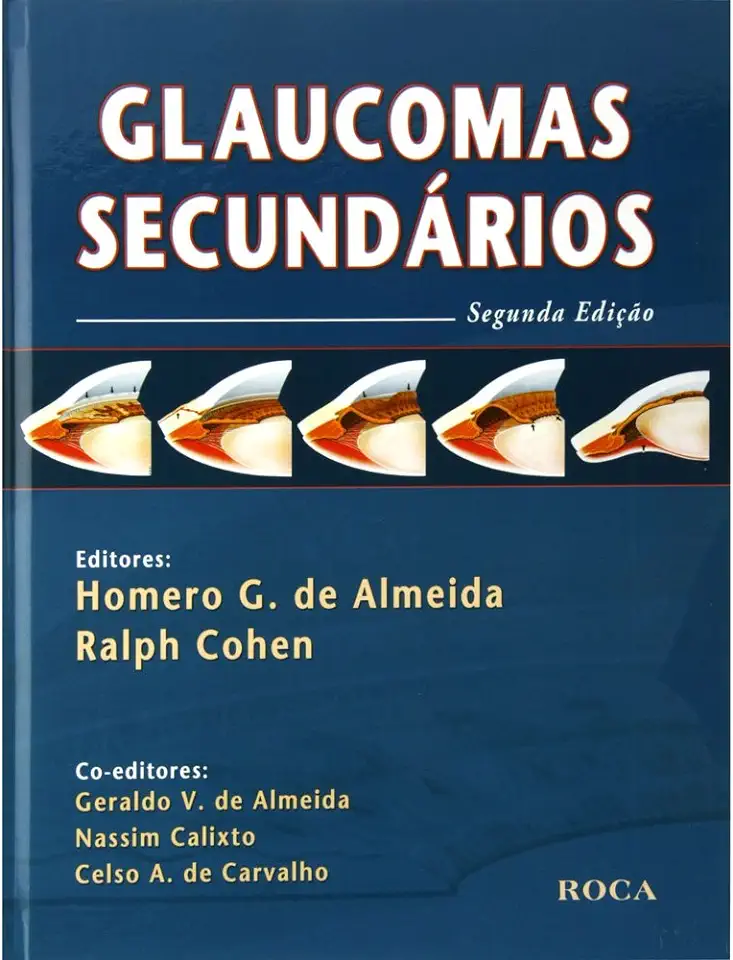
Secondary Glaucomas - Homero Gusmão de Almeida
Secondary Glaucomas: A Comprehensive Guide
Introduction
Glaucoma is a group of eye diseases that damage the optic nerve, which is responsible for sending visual information from the eye to the brain. Secondary glaucoma is a type of glaucoma that is caused by another underlying medical condition or trauma.
Causes of Secondary Glaucomas
There are many different causes of secondary glaucoma, including:
- Uveitis: Inflammation of the uvea, the middle layer of the eye, can block the flow of fluid from the eye and lead to glaucoma.
- Trauma: Eye injuries can damage the structures of the eye and lead to glaucoma.
- Neovascular glaucoma: This type of glaucoma is caused by the growth of new blood vessels on the iris, the colored part of the eye. These new blood vessels can block the flow of fluid from the eye and lead to glaucoma.
- Pigmentary glaucoma: This type of glaucoma is caused by the buildup of pigment in the trabecular meshwork, the tissue that drains fluid from the eye. This buildup can block the flow of fluid and lead to glaucoma.
- Pseudoexfoliation syndrome: This condition is characterized by the buildup of a flaky material on the lens of the eye. This material can block the flow of fluid from the eye and lead to glaucoma.
- Steroid-induced glaucoma: This type of glaucoma is caused by the use of steroid medications, such as prednisone. Steroids can increase the pressure in the eye and lead to glaucoma.
Symptoms of Secondary Glaucomas
The symptoms of secondary glaucoma are similar to those of other types of glaucoma, including:
- Blurred vision
- Pain in the eye
- Headaches
- Nausea and vomiting
- Loss of peripheral vision
Diagnosis of Secondary Glaucomas
Secondary glaucoma is diagnosed through a comprehensive eye exam, which includes:
- Visual acuity test: This test measures how well you can see.
- Tonometry: This test measures the pressure in your eye.
- Gonioscopy: This test examines the angle between the iris and the cornea, the clear outer layer of the eye.
- Ophthalmoscopy: This test examines the inside of your eye, including the optic nerve.
Treatment of Secondary Glaucomas
The treatment of secondary glaucoma depends on the underlying cause. Treatment may include:
- Medications: Eye drops or oral medications can be used to lower the pressure in the eye.
- Laser surgery: Laser surgery can be used to create a new pathway for fluid to drain from the eye.
- Traditional surgery: Traditional surgery may be necessary to remove blockages or repair damage to the eye.
Prognosis of Secondary Glaucomas
The prognosis of secondary glaucoma depends on the underlying cause and the severity of the condition. Early diagnosis and treatment can help to preserve vision and prevent further damage to the eye.
Conclusion
Secondary glaucoma is a serious eye condition that can lead to vision loss. However, with early diagnosis and treatment, most people with secondary glaucoma can maintain their vision and enjoy a good quality of life.
Call to Action
If you are experiencing any of the symptoms of secondary glaucoma, it is important to see an eye doctor right away. Early diagnosis and treatment can help to preserve your vision and prevent further damage to your eye.